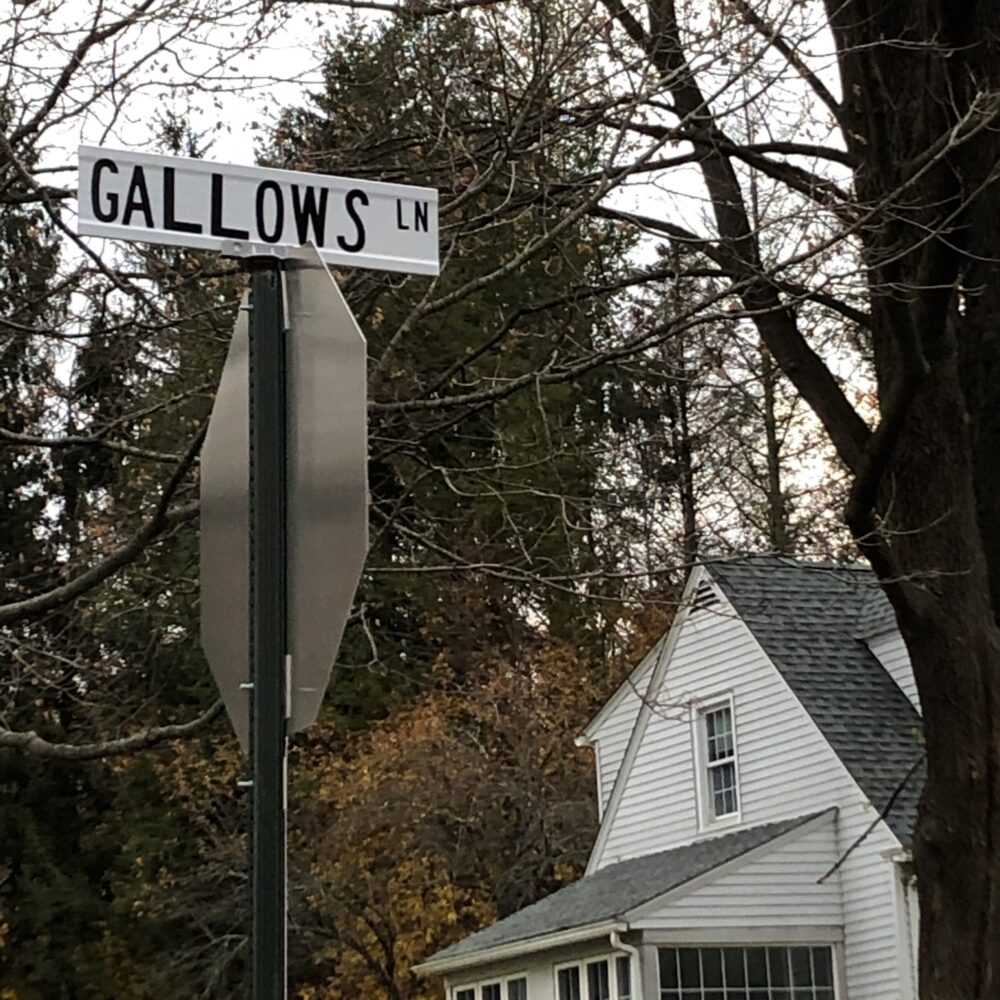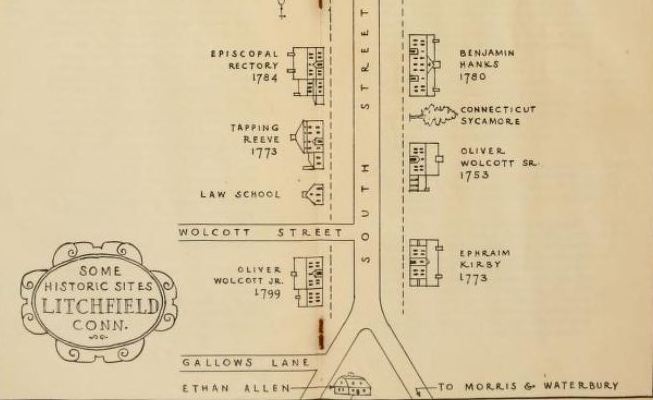Wow
Gallows Lane, Litchfield
Long time CTMQ readers know that there are a lot of oddly named roads in our little state. I seek them out, take a picture, and then write up a mildly humorous account with a typically fictional name origin story.
But once in a while, an oddly named road is oddly named for a real reason. Such is the case of Gallows Road in Litchfield, just a hop, skip, and hanging away from the town’s chic chic National Landmark center. At this point you’ve probably guessed the gallows in Gallows Lane were a real gallows. (Yes, “gallows” is a singular noun meaning a structure, typically of two uprights and a crosspiece, for the hanging of criminals.)

Gallows Lane ascends Gallows Hill, rising to South Street. Today, the Litchfield Community Greenway courses near the bottom of the hill on its way to White Memorial. Two mid-century modern houses are perched near the top, including the beautiful Gagarin Houses designed by Marcel Breuer. (Swoon.)
Back in the day, this part of Litchfield was home to Ethan Allen, Oliver Wolcott (Jr. and Senior), Tapping Reeve and his law school. If I expand the radius another half mile, there are all sorts of other historic people and places around here, but let’s stick to Gallows Road and why it’s called that.
The story comes from Peter Vermilyea in Connecticut History, who does note that as a historian, he’s quick to question such fantastic tales from the past – but has verified this particular one regarding the execution of Barnett Davenport of New Milford.
Davenport served under George Washington in the Revolution and was at Valley Forge, Fort Ticonderoga, and Monmouth Court House. He had been a troubled youth and was a convicted horse thief and wound up deserting, returning home to Connecticut. Then things got ugly.
Davenport took a job with Caleb Mallory, a farmer who operated a grist mill along what is now Route 109 in Washington. Mallory and his wife Jane had two daughters who lived in the area. One of the daughters had three children: a daughter Charlotte, nine years old, and sons John and Sherman, ages six and four. In February 1780, Davenport convinced Caleb’s two daughters to go on a trip. With the two away from the house, Davenport entered the home on the night of February 3rd and beat Caleb, Jane, and Charlotte to death. Looting the house of its valuables, he set it ablaze as he left, killing John and Sherman.
Whoa. Humans have murdered humans since the very first, but it’s still somewhat startling to read that regarding quaint 18th-century Litchfield. Davenport escaped and hid in a – you guessed it – in a cave in Cornwall. That lasted six days when he was captured and brought to Litchfield where he was arraigned and gave a full confession.

Davenport’s trial was presided over by none other than Roger Sherman, fresh from his work on the Declaration of Independence. Sherman sentenced Davenport to 40 lashes and then to be hanged. That’s a weird punishment, right? Like, did the 40 lashes happen right before he was hanged? If so, what goes through a man’s mind as he’s being lashed and bloodied staring up at where he’s about to die after the 40th strike across his back?
The execution took place at Gallows Hill on May 8, 1780. Several other hangings occurred there over the years and it was always a fun afternoon to take in the sights and sounds of death. Fun times for the whole fancy Litchfield family.
![]()
CTMQ’s Highways, Roads & Tunnels

Leave a Reply